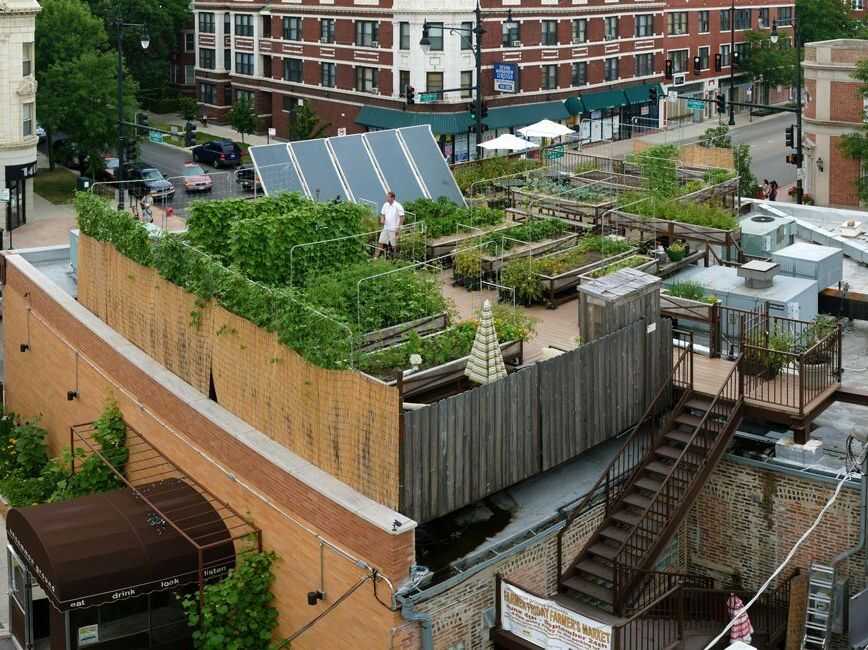Going Green Up High: Your Guide to Rooftop Farming

Why Rooftop Farming? It's Not Just a Pretty Picture!
So, you're thinking about rooftop farming? Awesome! Let's be honest, the idea of growing your own tomatoes while enjoying a city skyline view sounds pretty darn amazing, right? But it's more than just Instagram-worthy aesthetics. Rooftop farming offers a surprising number of benefits. Think fresh, locally-grown produce, a boost to your mental well-being (who doesn't love tending to plants?), and even a contribution to a greener planet. It's a win-win-win situation, if you ask me!
Getting Started: Planning Your Rooftop Oasis
Before you start picturing yourself harvesting a mountain of organic kale, there's a little planning involved. This isn't your grandma's garden patch – we're talking about rooftop real estate! First, check your building's regulations. You might need permits, especially if you're planning something large-scale. Next, assess your roof's structural integrity. Can it handle the weight of soil, planters, and, well, you? Get a structural engineer involved if you're unsure. Safety first, folks!
Choosing the Right Plants: Not All Plants Are Created Equal
Now for the fun part – picking your plants! Keep in mind that rooftop conditions can be different from ground-level gardening. Rooftops often experience extreme temperature fluctuations and less-than-ideal soil conditions. Choose hardy, drought-tolerant plants that can withstand the heat and sun exposure. Herbs, strawberries, and certain vegetables like lettuce and peppers tend to do well. Think about what you'll eat and enjoy – gardening should be fun!
Building Your Rooftop Farm: From Concept to Cultivation
You have a plan, you've chosen your plants; now comes the construction! You've got several options. Raised garden beds are a popular choice for rooftop farming; they're relatively easy to build and maintain. But don't forget about lightweight containers; they're easier to move around and offer great flexibility if you're short on space or need to rearrange your garden. Whatever you choose, make sure it's weather-resistant and strong enough to handle the elements.
Irrigation Systems: Keeping Your Plants Happy (and Hydrated)
Irrigation is crucial, especially considering the potential for wind and sun exposure on a rooftop. A drip irrigation system is ideal for efficient water use. But even a simple watering can will work – just be prepared for regular watering, especially during hot and dry spells. Also, don't forget about the amazing potential of rainwater harvesting! It's eco-friendly and can significantly cut down on your water bill.
Maintaining Your Rooftop Garden: A Little TLC Goes a Long Way
Once your rooftop garden is up and running, maintaining it is key to a successful harvest. Regular weeding is essential to prevent competition for nutrients and water. Pest and disease control is also important. Consider using organic pest control methods to keep your crops healthy and avoid harmful chemicals. And don't forget about fertilization! Healthy soil is happy soil, and happy soil means happy plants.
Troubleshooting Common Rooftop Farming Problems
Let's face it; rooftop farming isn't always a walk in the park (pun intended). You might encounter challenges along the way, such as strong winds, extreme temperatures, and limited soil volume. But don't worry; with a little know-how, you can overcome these hurdles. Regular monitoring and adjustments are crucial to ensuring the well-being of your plants. And if you're struggling, don't hesitate to consult with experienced gardeners or agricultural experts.
The Environmental Impact of Rooftop Farming: It's a Big Deal
Beyond the personal satisfaction of growing your own food, rooftop farming offers significant environmental benefits. It helps reduce the carbon footprint of our food systems by decreasing the need for long-distance transportation. It also contributes to urban green spaces, improves air quality, and reduces the urban heat island effect. Think of your rooftop garden as a little oasis of sustainability in the concrete jungle!
Rooftop Farming: The Urban Farming Revolution
Rooftop farming is more than just a trend; it's a movement. It's a testament to our growing awareness of the importance of sustainable food systems and our desire to reconnect with nature, even in the most urban of environments. It's a chance to grow your own food, connect with your community, and contribute to a healthier planet – all from the comfort of your rooftop.
Conclusion: Grow Your Own, Live Better
So, are you ready to embrace the green revolution, one rooftop at a time? Rooftop farming offers a unique blend of practicality, sustainability, and sheer enjoyment. It's a chance to cultivate fresh, healthy food, improve your physical and mental wellbeing, and contribute to a greener, more sustainable urban landscape. While there are challenges, the rewards are truly rewarding!
Frequently Asked Questions
Q1: How much does it cost to set up a rooftop farm?
A1: The cost varies wildly depending on the size of your farm, the materials you use, and whether you hire professionals for installation. You could spend a few hundred dollars on a small, simple setup, or several thousand on a larger, more elaborate system.
Q2: What kind of permits do I need for rooftop farming?
A2: This depends heavily on your location and the size and type of your rooftop farm. Always check with your local authorities before you begin any construction or planting.
Q3: Can I grow any type of plant on my roof?
A3: Not all plants thrive in rooftop environments. Choose plants that can tolerate sun, wind, and potential temperature extremes. Research plants that are suited to your specific climate and location.
Q4: How do I deal with pests and diseases in a rooftop garden?
A4: Prevention is key. Choose disease-resistant plants, monitor regularly for pests, and utilize organic pest control methods whenever possible.
Q5: What if my roof leaks?
A5: A leaking roof is a serious problem, irrespective of your rooftop garden. Address the leak immediately before proceeding with any further rooftop farming plans.